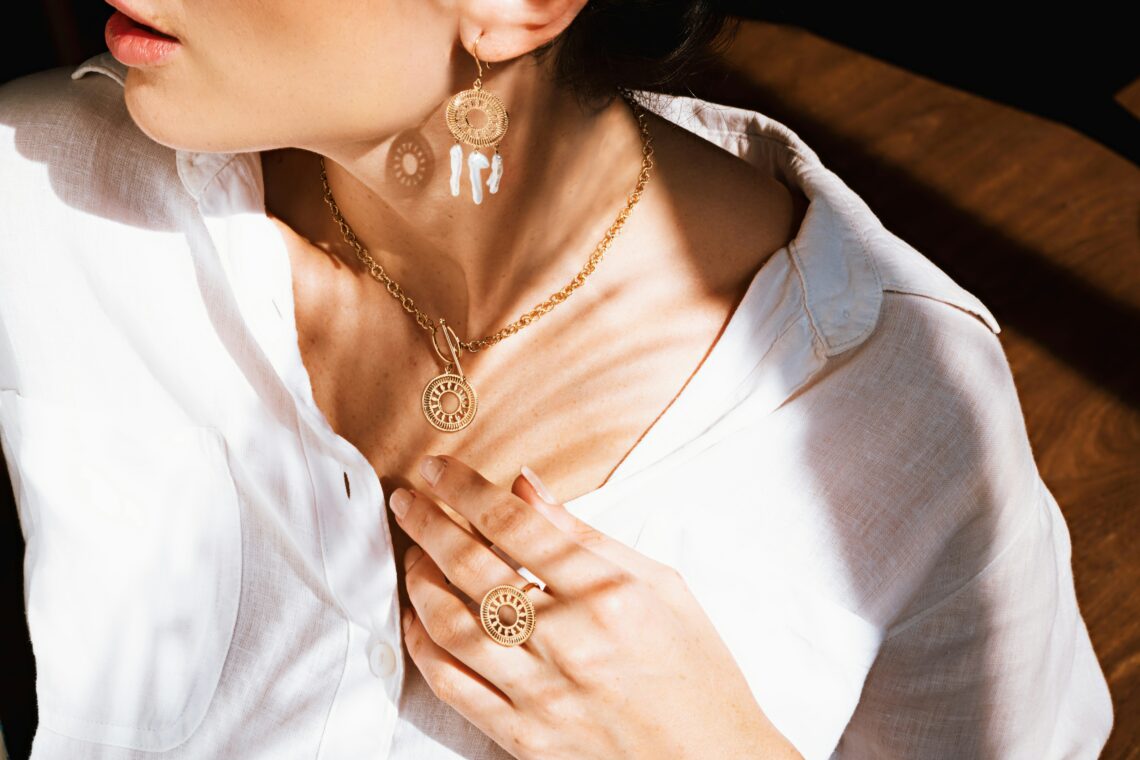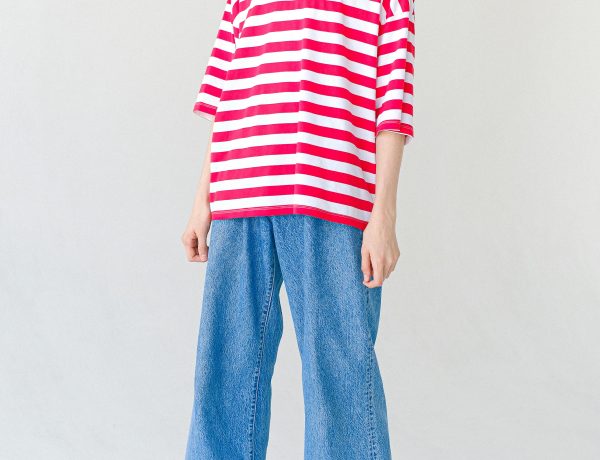If you’re hoping to cash in on your jewelry collection, you’re not the only one. Millions are discovering the potential treasure troves that lie hidden in their jewelry boxes.
The trick is recognizing fashion jewelry with resale value, which can turn estate sale finds and inherited baubles into profitable endeavors. This can be a daunting challenge, but don’t think of it as too big of a job: you can make it fun, like a treasure hunt. By understanding the specific characteristics that contribute to greater value, such as designer hallmarks or unique craftsmanship, you will be able to discover hidden treasures in your very own collection.
Whether your jewelry is vintage costume design or trendy modern chic, knowing their value is the first step in cashing in.
Knowing where to sell best and how to entice buyers can make a huge difference to your return. But with a little research and a savvy approach, you can reap those rewards in the colorful marketplace of jewelry resale.
How To Find Out How Much Your Jewelry Is Worth
Selling your jewelry from home may not sound easy, but it does take a discerning eye for detail and understanding a few important factors that can affect resale value.
Pay attention to things like the correct valuation of jewelry and the importance of state and authenticity. Knowing what to look for in valuable pieces can help you maximize your return on investment.
What is Jewelry Appraisal?
Jewelry appraisal is an art and a science. It is the practice of valuing works in order to ascribe them market value. Expert appraisal from The Alloy Market makes figuring out the worth of your pieces extremely simple.
When it comes to diamonds, experts consider the 4Cs: cut, color, clarity and carat weight. All these factors add to value. Natural diamonds that are of very high clarity and color grades are trusted to sell for higher prices. Keep all appraisal documents secure — it’s worth its weight when you sell.
The Condition Of The Item Etc Is Important
The condition of the jewelry may influence its value as well. Good-condition items typically fetch higher prices. Scratches or missing stones can drastically reduce value.
Before you sell, consider getting damaged pieces restored to increase appeal.
Authenticity is key—especially with designer fashion jewelry. Authentic pieces generally have hallmarks or certificates of origin and material. Counterfeit or altered items are not marketable, so make sure you can verify the authenticity of items being listed for sale.
Identifying Valuable Traits in Jewelry
Some traits can indicate that something’s a hidden gem. Rare designs, vintage origins and quality craftsmanship raise desirability. When assessing pieces, seek out notable designers or rare styles.
For vintage jewelry, examine trademarks, which can show how old and where a piece is from, adding to its cachet. The unique settings or detailed metalwork of the pieces often signal higher quality and draw the attention of collectors and aficionados.
Select the Right Selling Platform
It is important to select the right platform from which to sell your jewelry collection in order to maximize returns. Explore the pros and cons for each of the vast range of potential selling outlets, including internet commerce, local businesses, and specialty auctions.
The Good, The Bad and The Ugly of Online Marketplaces
Web-based marketplaces like eBay, Etsy, and Amazon Handmade provide wide reach and user-friendly listing processes. You can display your jewelry to a worldwide market and possibly reach thousands of customers. For luxury and high-value items, there are always platforms like The Alloy Market that offer a curated experience with appraisal services.
Advantages:
– Large Audience Number: International access.
– User-Friendly: Simple platforms to get items listed.
Disadvantages:
– Fees: You’re required to pay a fee to use their services.
– Competition: Lots of competition can affect visibility.
Jewelry Local Selling Options
There is a certain sense of security and immediacy to selling locally that can be lacking in online marketplaces. Facilitators like pawn shops, consignment shops, and local jewelers offer opportunities for in-person exchanges, often leading to a more tailored negotiation process between client and buyer. Another easy option is Facebook Marketplace, which allows you to connect with nearby buyers.
Advantages:
– List Now: Frequently get paid immediately.
– Interpersonal: Can negotiate terms one on one.
Disadvantages:
– Small Audience: Fewer potential buyers.
– Low Offers: Might not get the best price available.
Specialised Jewelry Auctions
Specialist jewelry auctions are a more niche but potentially lucrative route, particularly for unique or high-value items such as engagement rings. Serious collectors and enthusiasts might place higher values on pieces than your average consumer, and therefore may be drawn to auctions.
Investigate each auction house’s reputation, as results will differ depending on reach and clientele.
Advantages:
– Audiences: Jewelry specific buyers.
– Works with Bids: These bidding tools can lead to potentially high returns.
Disadvantages:
– Uncertain Outcomes: Winning bids can differ widely.
– Complex Process: Requires an understanding of auction dynamics.
How to Get the Most Out of What Type of Jewelry
If you know what you are doing, going through one kind of jewelry for resale can be a success. Depending on whether you are dealing in luxury items, vintage sets, or trendy costume pieces, you’re going to need to know how to treat each type in order to maximize profit.
How to Sell High-Value and Luxury Pieces
The types of items you would be selling—diamond earrings, Rolex watches, engagement rings—can be high-value items, and thus the need to focus on brand reputation / quality becomes very important. Get a professional appraisal because you do not want to misrepresent market value.
The selling price of luxury items usually has a potential gap due to the requirement of proof of authenticity or certification.
Post luxury and branded products on high-end platforms There is generally a serious buyer with a big enough budget on the other side of each transaction on these platforms. Think about online marketplaces that appeal to niche audiences for luxury items or auction houses for larger collections.
Specialize in unique designs and trendy styles that can be sold for a profit if they are timely. If you’re hoping to sell, search for unique marks or labels that could help enhance their value if they’re designer products.
Social media platforms, eBay, and Etsy provide a good opportunity to expose the product more. Even local events such as flea markets or consignment shops could do the trick, giving you a face-to-face sales experience with potential buyers.
Managing Vintage and Antique Collections
Vintage and antique jewelry possess inherent value, mainly due to their craftsmanship and history. It should have been apparent that describing features like the era or the maker adds context that interests collectors. Use that knowledge to price fairly; in some cases, age alone can be a selling point.
Estate sales or specialized antiques dealers are ideal outlets for these items. Such venues encourage informed conversations with buyers who value historical works.
It’s also wise to employ platforms dedicated to antiques and vintage, where consumers are looking for specific and nostalgic items.
Closing the Sale: Everything from Offer to Payment
When you are ready to finish the sale of your unwanted treasures in precious metal and gems, there is a specific method to getting the best offer, and ensuring that everything goes smoothly. From negotiating a fair cash offer to collecting the payment and profit with shipping, every single step has its very own significance.
Negotiating to Get the Best Price
Once a jewelry buyer gives you a price estimate or valuation, you are free to negotiate. Get informed on the scrap value and market trends for your pieces.
If necessary, explain to the buyer why you think your jewelry is worth a higher price. Stay courteous, but be resolute in your rationale. Request their details about assessment to have better knowledge of your debating ground.
Feel free to consult several buyers on their offers. A knowledgeable buyer values a knowledgeable seller who understands that the value of their jewelry goes beyond mere intrinsic value.
Use competitor estimates to inform your conversation and even bring these additional asks/value-add features into the conversation.
Payment & Shipping
Once you arrive at a mutually agreeable price, next comes payment. Make sure that the method of payment is secure. Avoid cash payments from buyers who you haven’t thoroughly vetted.
Make sure you keep detailed records of all transaction amounts and dates. For larger sums, you may wish to explore even more secure alternatives or bringing on professionals for your peace of mind.
Giving the same amount of attention to how you ship your jewelry Secure your belongings with appropriate packing materials, and cover the package for damage or loss.
Track your delivery to see its progress
Maintain clear communication with the buyer throughout the shipping process, providing them with tracking numbers and estimated arrival times so they can trust your professionalism.
Read more lifestyle articles at ClichéMag.com
Images provided by Deposit Photos, BingAI, Adobe Stock, Unsplash, Pexels, Pixabay & Creative Commons



